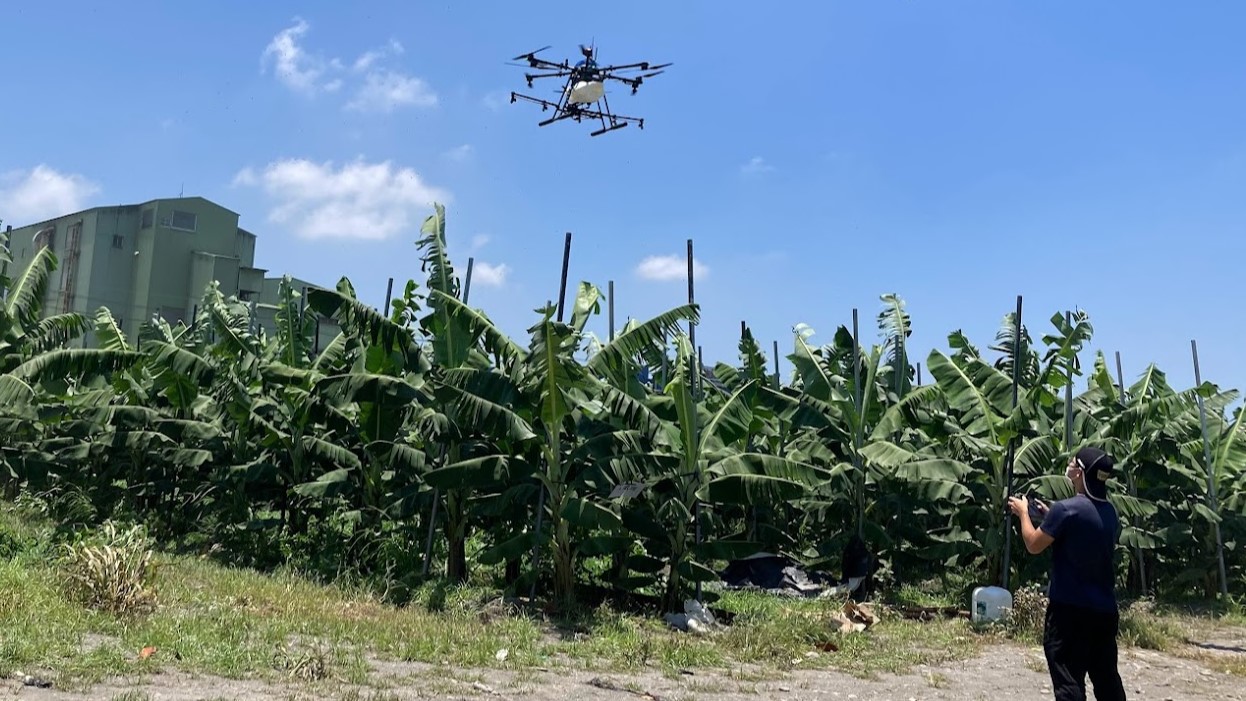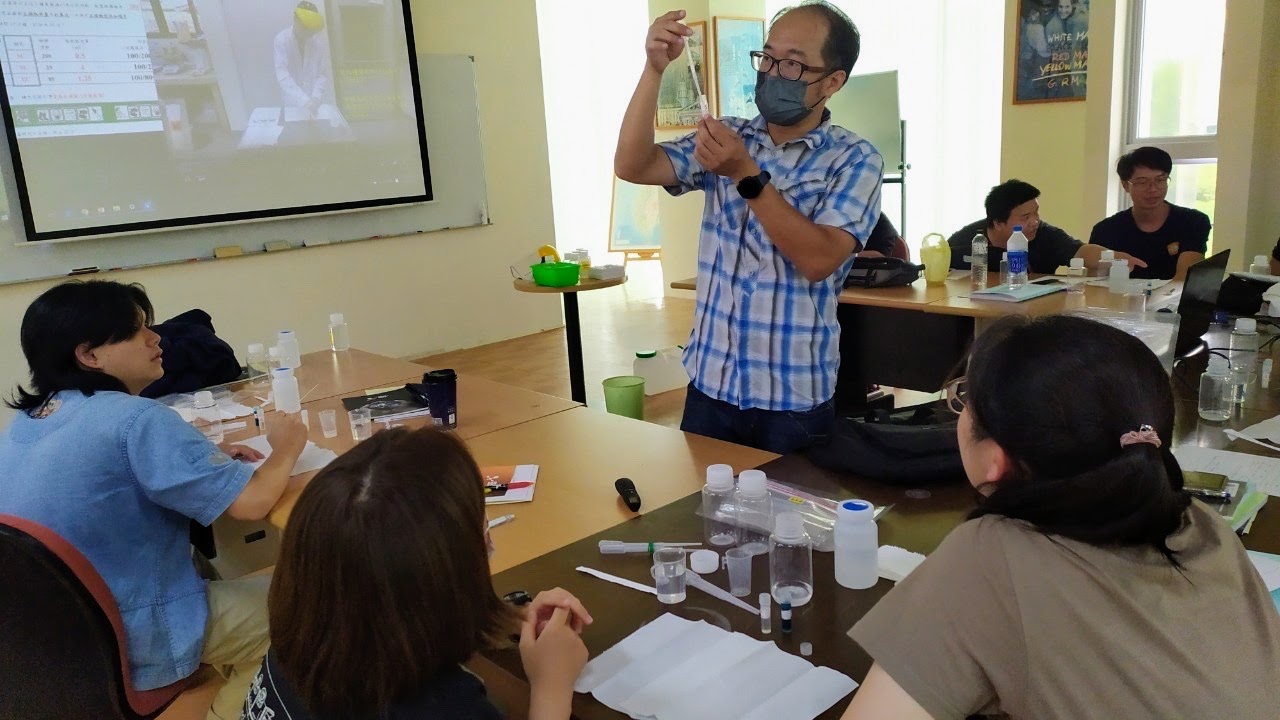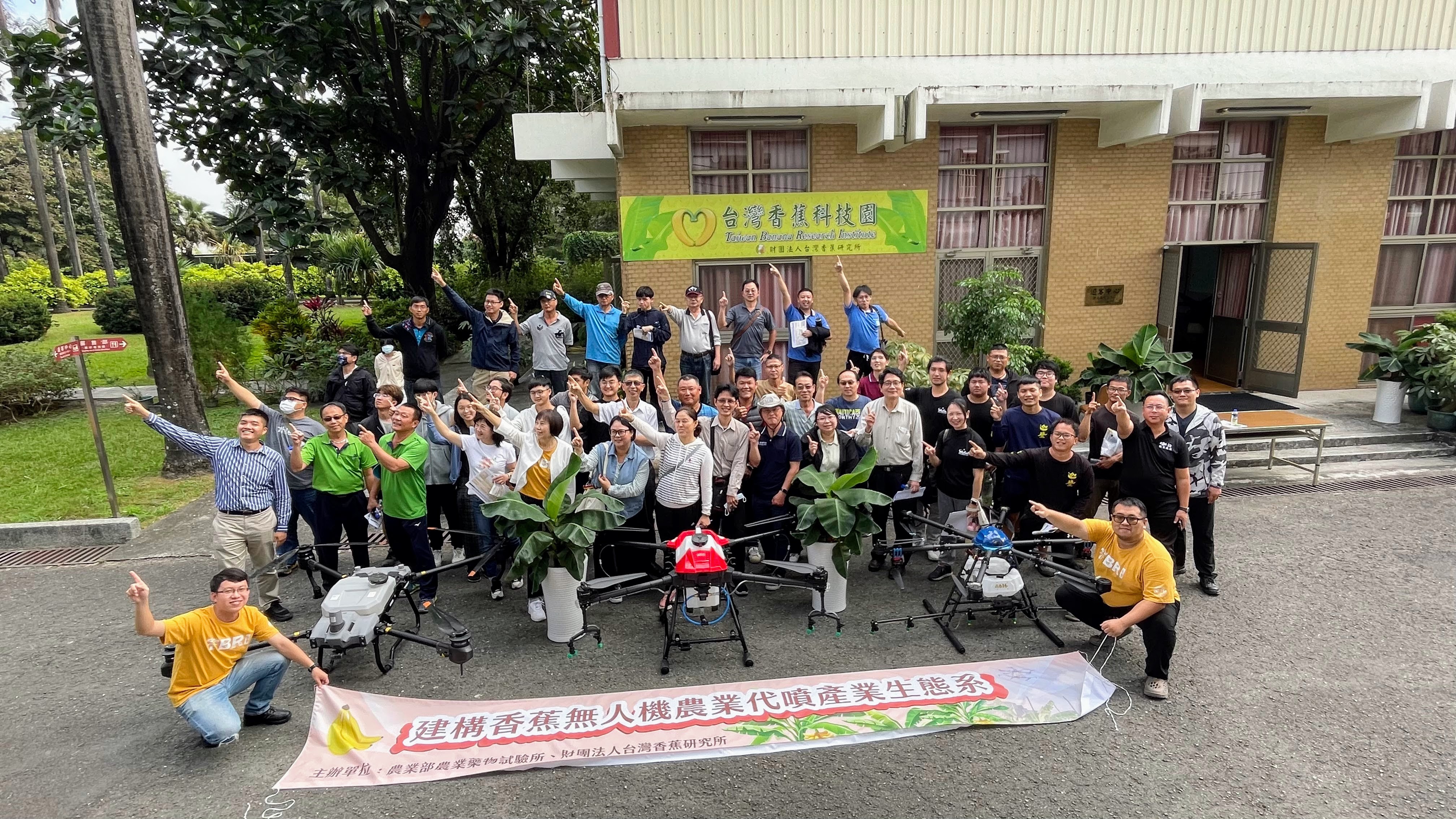Author:Chih-Min Chiang/assistant researcher, Agricultural Chemicals Research Institute, Ministry of Agriculture
Shang-Wei Yang/assistant researcher, Agricultural Chemicals Research Institute, Ministry of Agriculture
Bananas are one of the major export fruits in our country, with Pingtung being a primary banana-producing region where the cultivation area reaches 4,000 hectares annually. The increasing demand for Unmanned Aerial Vehicle (UAV) pest control in large-scale plantations necessitates precision application to achieve accurate pesticide use and labor efficiency. In this scientific endeavor, we conduct UAV precision application trials to verify the efficacy of pesticide application, aiming to establish precise parameters for UAV spraying in banana cultivation. The goal is to promote the widespread adoption of UAV technology in banana agriculture, enhancing industry efficiency and achieving effective pest control.
By constructing an ecosystem for the UAV agricultural spraying industry, we aim to integrate the values among its members for greater benefits. This collaborative effort seeks to facilitate mutual growth among members, allowing the industry to progress and expand. The establishment of this ecosystem will contribute to the advancement of the industry through effective and widespread application of UAV precision spraying technology. ( Figure 1)
 Figure 1. Scientifically validating UAV parameters and pest control efficacy.
Figure 1. Scientifically validating UAV parameters and pest control efficacy.Practical Application Training for UAVs
UAV agricultural spraying is an emerging industry, and professional training is crucial for its development. This task requires collaboration across different fields, incorporating agricultural research findings and implementing them in local training units. In Taiwan, operators of agricultural UAVs are required to hold relevant certifications, including the Civil Aeronautics Administration's Remote Pilot License and Operator Certificate for UAVs, as well as the Ministry of Agriculture's Pesticide Application Technician Certificate. These combined certifications are commonly referred to as the 'dual certificates' for agricultural UAV spraying.
While obtaining certifications provides basic skills, in-depth learning is essential for practical applications of various techniques. Therefore, our research team collaborates with a local UAV training school (Shih Chien University, Kaohsiung campus) to conduct various instructional courses.(Figure 2) The content includes pesticide application techniques, explanation of drift test designs, calibration of nozzle flow rates, planning and execution of test flight routes, pesticide formulation testing, calculation of mixed pesticide quantities, and testing for adverse pesticide reactions. Trained individuals will possess a comprehensive understanding of UAV and pesticide applications, strengthening their skills in more complex crop UAV applications and enhancing the quality of pesticide use.
 Figure 2.Conducting practical UAV pesticide application instruction at a local school (Shih Chien University, Kaohsiung campus), including courses on pesticide usage calculation and proper mixing techniques.
Figure 2.Conducting practical UAV pesticide application instruction at a local school (Shih Chien University, Kaohsiung campus), including courses on pesticide usage calculation and proper mixing techniques.Verification of Pest Control Effectiveness in Banana Plantations through UAV Pesticide Application
In the early stages, there were cases in Taiwan where manned aircraft were used for extensive aerial pesticide spraying in banana plantations. The characteristics of the pesticides used in those cases are similar to those used in contemporary UAV pesticide application. Therefore, it is worth exploring whether common pests and diseases can be effectively controlled through UAV pesticide application.
In collaboration with the Banana Research Institute, our research team conducted trials for the control of Banana freckle disease in banana plantations. Field experiments were conducted in Neipu Township, and Chaozhou Township, Pingtung County. Initially, precision spraying parameters were confirmed using domestically branded UAVs. Subsequently, UAV spraying was conducted based on the principle of applying the same amount of pesticide per unit area as traditional ground pesticide spraying.
Ultimately, the results confirmed that UAV pesticide application can achieve disease control effects similar to ground-based application. This gradually gains acceptance among large-scale contract farmers in the banana industry due to the high efficiency and relatively safe nature of this spraying method. It demonstrates that this labor-saving equipment can gradually replace traditional, time-consuming, and water-intensive spraying methods. Through collaboration between the Banana UAV research team and the local UAV application association, the research outcomes are being applied on the ground in banana cultivation industries facing severe labor shortages.
Enhancing Collaboration between Banana Cultivation Industry and UAV Application Groups
Before the implementation of this project, the banana industry primarily relied on traditional ground-based pesticide application methods. However, with the escalating issue of agricultural labor shortages, there is a growing demand for the application of UAVs. Through a scientific evaluation of UAV pesticide application, this project aims to verify its effectiveness in quality spraying, thereby boosting confidence among collaborating farmers in the application of UAV technology.
In 2023, the project organized the 'Establishing the Banana UAV Agricultural Spraying Industry Ecosystem Demonstration Workshop,' establishing a platform for communication among various stakeholders. (Figure 3)The goal is to facilitate continued and thriving development of this technology after its practical implementation. The aim is to enhance the industrial management of UAV agricultural spraying, address labor shortages in agriculture, and improve the safety and quality of exported agricultural products.
 Figure 3.All relevant organizations in the UAV spraying industry for banana cultivation gather together to collectively create a thriving environment for UAV applications.
Figure 3.All relevant organizations in the UAV spraying industry for banana cultivation gather together to collectively create a thriving environment for UAV applications.